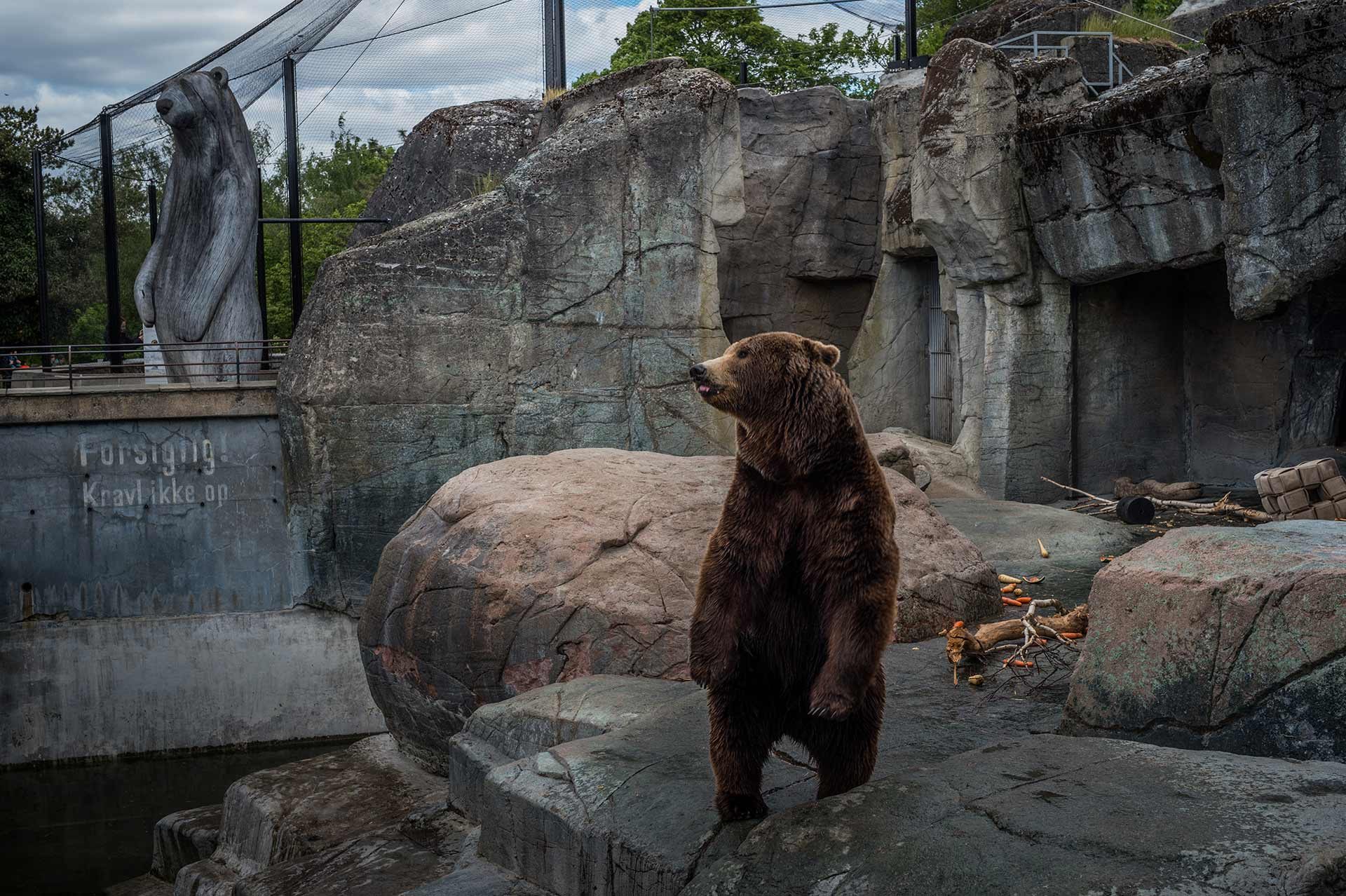 Photo Credit: Jo-Anne McArthur, Captive.
Photo Credit: Jo-Anne McArthur, Captive.
Although framed as educational family-friendly spaces, “zoos” entail the non-consensual control of vulnerable beings for the pleasure and convenience of humans. Having emerged in modern British society as an extension of the colonial project of dividing, categorising, and rationalising controlled groups, “zoos” are functional in their ability to maintain social inequality.
Consider the work of sociologist Erving Goffman, who theorised what he termed “total institutions” as spaces where marginalised groups are fully controlled under a central authority. “Zoos” can be said to constitute total institutions as they control and confine nonhuman inmates under human authority. There is, furthermore, a logic in “zoos” similar to that of prisons. Both sites regulate behaviours, instil discipline, and psychologically traumatise to the point at which the physical and emotional experiences of human and nonhuman inmates are comparable in their perceived social disposability.
As colonial legacies, these institutions ritualistically maintain cultural hierarchies. This is accomplished by neatly containing nonhuman animals in sterile, restricted spaces where humans can safely and neatly “interact” with them. “Zoo” confinement physically restrains nonhuman animals with bars, cages, and leashes, but it also psychologically restrains them through domestication and psychological numbing.
Just what sort of lessons are being learned in “zoos” is questionable. Nonhuman animals trapped in the confines of even the most modern and conscientious “zoos” cannot by any reasonable stretch of the imagination be said to lead natural lives. Their movements are severely confined, their interactions with other animals are restricted, and their eating and sexual behaviours are entirely dependent upon the whims of human authority. Rather than challenging speciesism, “zoos” reinforce it by encouraging visitors to take on the role of privileged observers who may access inmates at their leisure and convenience for the purposes of entertainment. The clear, physical segregation built into “zoo” displays encourages further discrimination.
Unfortunately, the mythmaking of “zoo” proprietors detours considerably from the reality of inmates undergoing daily trauma behind “zoo” bars. Indeed, human visitors are shielded from the stress that nonhuman animals experience from regular and often international transfers between facilities, as well as the industry standard of “culling” individuals who impede on the facility’s carrying capacity in the constant endeavour to facilitate newborns to delight visitors. Surely, we can imagine other ways of interacting with other animals that are better able to respect nonhuman personhood and autonomy while also educating the public and supporting conservation efforts.
 Readers can learn more about the social movement politics of Nonhuman Animal rights and veganism in my 2019 publication, Piecemeal Protest: Animal Rights in the Age of Nonprofits. The beautiful cover art for this text was created by vegan artist Lynda Bell and prints are available on her website, artbylyndabell.com.
Readers can learn more about the social movement politics of Nonhuman Animal rights and veganism in my 2019 publication, Piecemeal Protest: Animal Rights in the Age of Nonprofits. The beautiful cover art for this text was created by vegan artist Lynda Bell and prints are available on her website, artbylyndabell.com.
Receive research updates straight to your inbox by subscribing to my newsletter.